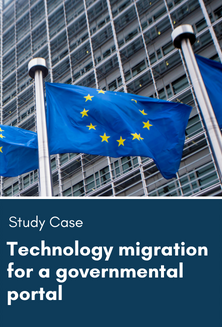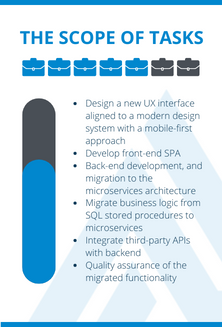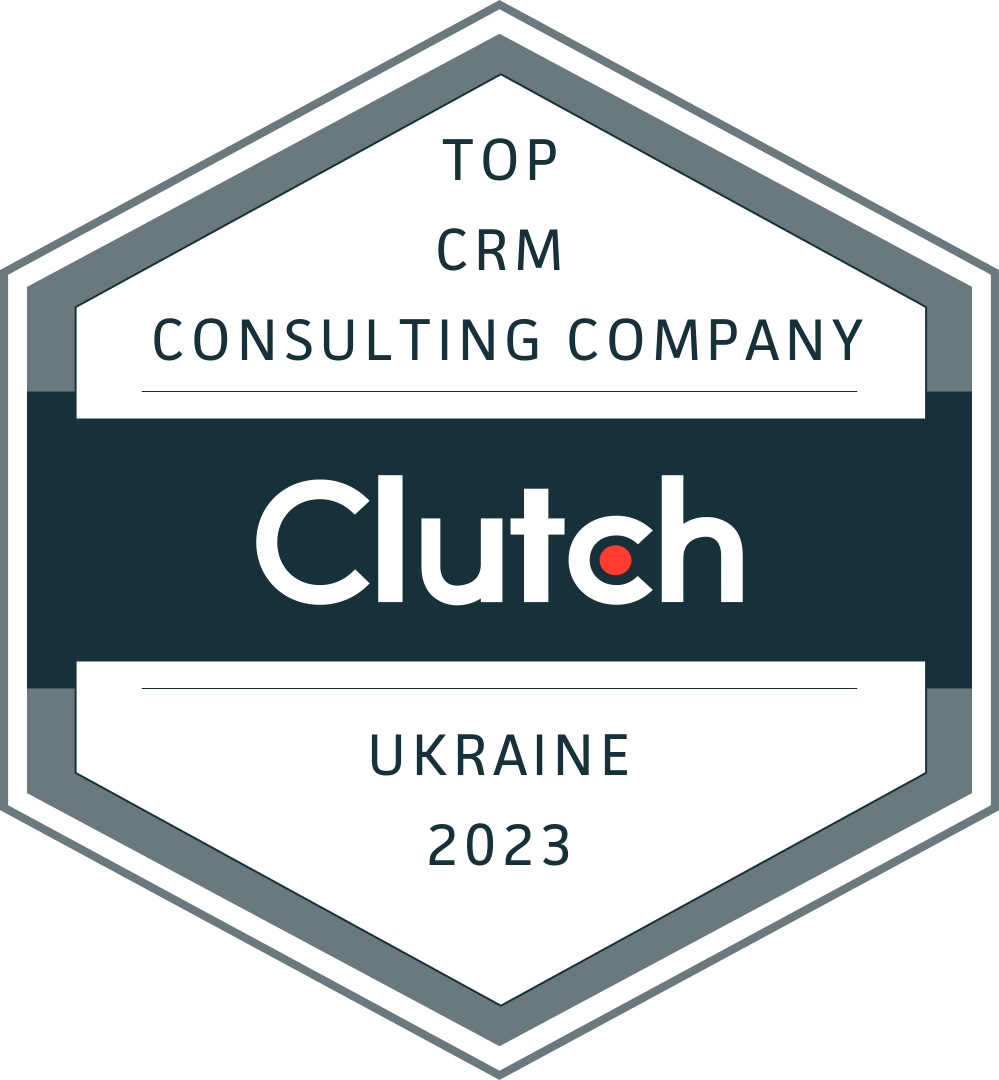No doubt, the technologies companies use are the backbone of their organizations. With this in mind, they can either boost their growth or hold back from leveraging cutting-edge tech stack to create new experiences for employees, customers, and partners. While many companies still rely on legacy applications because they somehow cover the business needs, more and more businesses decide to carry out legacy application migration to upgrade the IT ecosystem.
However, the modernization of the technology stack is easier said than done. The migration of a legacy system can turn into a nightmare if implemented the wrong way. You may have issues with moving data, meeting deadlines, running critical business operations, or sticking with the set timeframes. Hence, planning a successful technology migration is essential for businesses that want to modernize their system with minimal to no disruptions.
A well-rounded strategy of legacy system migration ensures you minimize the risks to a minimum. When you have a plan, your organization won’t suffer from derailed business workflows or loss of operational speed. Moreover, all migration steps will run according to the plan, so you will always know where you are on your way to better operational efficiency. Finally, all businesses are unique, so picking the right strategy for your legacy software migration is essential to ensure it aligns with your business goals and culture.
So, in this article, you will learn what types of migration strategies there are and what services this process can entitle:
- What Are Legacy Systems?
- Types of Technology Migration Strategies (Rehosting, Replatforming, Repurchasing, Refactoring, Retiring, Retaining)
- Technology Migration Services (Application Porting, Cloud Migration, Web Enablement, Mobile Enablement for Enterprise Mobility, Database Migration, Usability Re-Engineering)
What Are Legacy Systems?
In a nutshell, a legacy system is an outdated software or hardware used by the organization although it is no longer supported. The legacy solution may still be prone to doing the job it was designed for. However, it will keep the company away from interacting with new IT systems that enable flexibility, scaling, and convenience.
So, why do companies still use legacy systems?
- They see no perspective in investing in a more modern tech solution.
- They are afraid that the modernization of the toolkit will lead to internal resistance among employees.
- They do not have resources for up-front investment.
- They fear challenges the company may face in case of failed migration.
Nevertheless, using legacy systems has adverse side effects on the business. First, the IT environment becomes hard to maintain and support. This may lead to security threats because outdated systems have no space for upgrades. Second, data gets trapped in silos. Legacy solutions were not made to integrate with newer systems, so data exchange between legacy and new applications is nearly impossible without a significant investment. Third, it will be getting harder for the company to comply with strict regulations, for example, GDPR, which regulates the storage and use of customers’ data.
Types of Technology Migration Strategies
Before we detail how you can arrange the migration to a modern IT environment, let’s first define the migration strategy.
A migration strategy is a plan the company or a third-party service provider makes to move its software and data from an outdated system to a modern environment. There are numerous migration strategies out there that define how the application will be moved, what will happen with data, and more.
In this article, we will cover the most commonly used migration strategies. We will help you choose the one that meets your business resources and goals better to ensure a smooth and efficient transition to an optimized IT system.
Rehosting
One of the easiest ways of migrating a legacy application is rehosting, also known as Lift and Shift. Within the framework of this strategy, you just lift your tech stack and shift it to a new environment without any extensive changes. This enables the company to harness technology with minimal disruption to internal workflows and reach high RIO.

Replatforming
When you already host your legacy application on the cloud but want to change the platform (let’s say move from AWS to Microsoft Azure), you replatform it. You can make a few adjustments to optimize the app for a new environment to achieve better operation.

Repurchasing
Also known as Drop and Shop, the repurchasing strategy incorporates replacing a legacy app with a new version or another product. For example, you move from a traditional license to SaaS, leave the existing on-premises application and select the vendor’s latest version or third-party equivalent, or replace custom software.
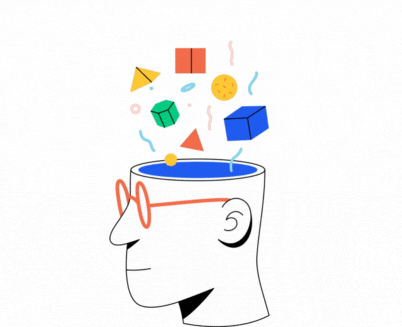
Refactoring
When the legacy mainframe application can no longer address the company’s needs, you may want to refactor or rearchitect the application. This strategy involves changing the software’s architecture to extend its capabilities and leverage new technology for business growth. This is the most expensive strategy, yet it enables you to optimize the legacy landscape.

Retiring
This technology migration strategy prompts you to turn off applications irrelevant to your business. You decommission or archive outdated software and shut down the servers it was hosted on. That’s a winning solution if the app brings no value to the company or it hasn’t been in use for more than 90 days.
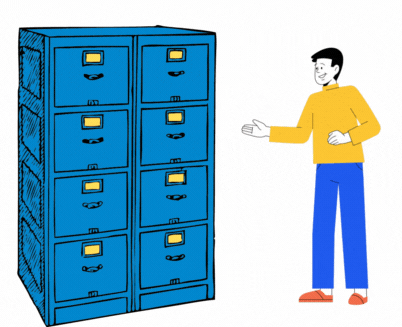
Retaining
Sometimes you cant migrate your entire tech stack either because your organization is not ready for the move or compliance requirements regulate this. In this case, you keep the legacy app until you decide to migrate, retire, or refactor it.
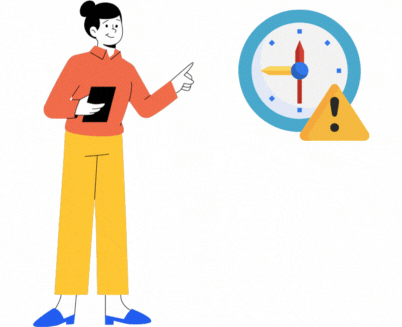
Technology Migration Services
When you are on your way to establishing a more flexible, responsive, and efficient IT environment in your company, it will be good to know what services you can obtain from technology migration companies.
Application Porting
When a legacy app is built to operate on one platform (for example, Windows), and you want to make it work on Linux or iOS, you’ve got to port it. This way, you’ve got to change software programming and its code so that it becomes available for other operating systems.
This service includes both native and cross-platform approaches. In other words, you can develop software meant to work only in a particular operating environment (native). Hence, you will have to build separate apps for Windows, iOS, Linux, etc. Or there is another way – cross-platform development that allows running an application on several computing platforms.
What Companies Will Benefit from Application Porting
- App vendors selling their software as a product.
- Education sector with a need to cover the demand for apps deployed on different operating platforms.
Cloud Migration
Whether you move your app from on-premise servers to the cloud or migrate across different cloud platforms, you should have a solid cloud migration strategy. You may need assistance deciding what cloud computing type will work better for you (private, public, hybrid, or community) or what services you want (SaaS, IaaS, or PaaS).
When you move your application and data to the cloud, you leverage this computing technology’s mobility, scalability, and cost-effectiveness.
What Companies Will Benefit from Cloud Migration
- Finance sector requiring efficient documentation flows, automatizations, and security.
- Real estate companies with a need for apps that can be used both on objects and in the office.
- Healthcare industry for complying with numerous regulations and gaining smarter control over data.
- Government institutions for process automation and quick access to data.
- Small businesses & startups that have limited resources but want to gain better operational efficiency.
Web Enablement
There were times when web-based apps were out of this world. Most users installed desktop software, which was available only on a particular PC. These days web applications are one of the most popular solutions as they help save space on the computer and can be accessed from any gadget.
If your organization has a desktop app version only, you may consider it beneficial to convert the application to the web. This will increase agility and mobility for employees and will simplify the use for your customers.
What Companies Will Benefit from Web Enablement
- App vendors offering their applications as a product.
- Real estate companies that will benefit from access to the application from different locations.
- Gas/oil enterprises with a large number of app users.
Mobile Enablement for Enterprise Mobility
If you would like to enable mobility at the workplace so that your employees could access business-critical tools or data from their phones, you can consider moving your legacy app to the mobile environment. However, this solution should also entitle enterprise mobility management to maintain and control mobile devices, wireless networks, and other mobile computing services for advanced security and flawless operation.
What Companies Will Benefit from Mobile Enablement
- Companies where workflows involve a lot of off-site work.
- Manufacturing industry for easier and faster data control.
- Educational sector for smooth access to educational programs or other tools from mobile.
- Constructing companies that require data from different locations.
Database Migration
Host your data in a more secure or better-optimized environment by outsourcing a database migration service. Your technical partner should ensure the data is smoothly moved to a new platform without any losses or damages. It should also preserve its structure not to disrupt workflows inside your company.
What Companies Will Benefit from Database Migration
- Legal firms and government institutions requiring a more flexible and secure storage solution.
- Brokerage companies that do not want to suffer from downtime or data breaches.
Usability Re-Engineering
An outdated interface does little to attract new customers to your business. That is why you may want to consider usability engineering services to improve the app’s UI and UX. This will ensure your staff can use software more effectively through a straightforward and intuitive interface. At the same time, your prospects or existing customers will appreciate the user-friendly nature of your digital product.
What Companies Will Benefit from Usability Re-Engineering
- Third-party service providers offering apps to their customers.
- Companies with legacy apps that are hard to use.
The Final Word
Replacing legacy applications can be the toughest yet most beneficial decision. A new tech stack will ensure your company can leverage new technology to yield results, build better customer relationships, and ensure employees have the tools to handle day-to-day tasks effectively.
However, a technology migration can lead to disaster if not arranged properly. That is why it is essential to know what migration strategy to take and, most importantly, find a trusted and experienced technical partner who will bring it to life.
With Advantiss, a company specializing in delivering technology migration solutions, you get peace of mind that the modernization of your legacy application will run smoothly. We have vast experience in migrating outdated solutions to cutting-edge environments with a focus on business value and operation. Contact us to learn what our company can do for your business to upgrade your tech stack and unlock a new level of performance.

